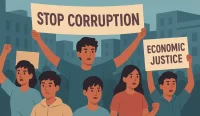Teaching is one of the most rewarding professions, but becoming a special education teacher takes that fulfillment to another level. Special education teachers have the unique opportunity to make a profound difference in the lives of students with diverse learning needs.
What Is a Special Education Teacher?
A special education teacher is a trained professional who works with students with diverse learning needs, including physical, emotional, cognitive, or developmental disabilities. These educators collaborate closely with parents, general education teachers, therapists, and administrators to create inclusive, supportive learning environments.
Passing a special education teacher certification is a critical step. Aspiring teachers often use dedicated study resources, like the Special Education Praxis 5354 Prep, to build expertise and confidence before taking the test.
But how do you get started? Learn the steps to help you succeed in this impactful role below.
Looking for a job? Visit whatjobs.com today
Step 1: Understand the Role
As a special education teacher, you’ll work with students facing challenges like autism, ADHD, or physical disabilities. For example, you might spend mornings helping nonverbal students use picture cards to communicate their needs, then adapt a math lesson for a child with learning differences by incorporating counting blocks.
A special ed teacher drafts Individualized Education Plans (IEPs), such as creating a plan for a student with mobility challenges that include modified seating and access to assistive technology. Your creativity shines when you design sensory-friendly activities—like a calm-down corner with weighted blankets—to help a student with anxiety refocus.
Step 2: Earn a Bachelor’s Degree
Aspiring special education teachers must earn a bachelor’s degree in special education or any related field. Suppose your degree in psychology includes electives on developmental disabilities, or your elementary education program offers a practicum in an inclusive classroom.
During coursework, you might role-play IEP meetings with classmates, simulating how to collaborate with parents advocating for their child’s speech therapy. Even if your degree isn’t specialized, alternative certification programs offer targeted training, such as modules on differentiating instruction for students with dyslexia.
Step 3: Gain Hands-On Experience
During your student teaching placement, you’ll assist in a classroom for students with emotional disorders. Picture co-teaching a reading group where you use multisensory techniques, like tracing letters in shaving cream, to engage a student with dyslexia.
In your practicum, you might design a visual schedule for a student with autism to ease transitions between activities, reducing meltdowns. These experiences teach you to adapt quickly—like swapping a noisy group activity for a quiet one-on-one time when a student becomes overstimulated.
Step 4: Pass Certification Exams
To earn your license, you’ll tackle exam testing skills like designing accommodations. A question might ask how to modify a science lab for a student with fine motor delays—your answer could involve pre-measured materials or partner work.
Study guides with practice scenarios, like writing IEP goals for a student transitioning to post-school employment, prepare you for real-world challenges. Aspiring special education teachers should learn to balance legal requirements with empathy, such as navigating a parent’s concerns about their child’s progress during an IEP meeting.
Step 5: Obtain State Licensure
Licensure requirements vary. In your state, you might complete coursework on autism strategies or pass an exam that includes simulations, like addressing a parent’s frustration over their child’s slow progress in reading.
After licensure, renewal might involve workshops on trauma-informed teaching or assistive technology. For example, you could learn to use text-to-speech software to help a student with dysgraphia participate in writing assignments.
Hiring? Post jobs for free with WhatJobs
Step 6: Pursue Ongoing Growth
Continuing education related to special education programs keeps your skills sharp for career growth. Attending a workshop on behavioral interventions might inspire you to introduce a token reward system for a student struggling with impulsivity.
Joining professional organizations connects you with peers—imagine brainstorming with a teacher who successfully integrated a student with hearing loss into a general education art class. If you pursue a master’s degree, your research project might focus on peer mentorship programs that build social skills for students on the autism spectrum.
Step 7: Embrace the Journey
Challenges will arise, but so will moments of triumph. You might spend weeks helping a student with selective mutism whisper their first word in class or cheer as a teen with intellectual disabilities bags groceries independently at their first job.
Even setbacks—like revising an IEP three times to meet a student’s evolving needs—teach resilience. Celebrate small wins, like a student finally tying their shoes or raising their hand to share an idea, and remember: your patience and advocacy lay the groundwork for lifelong growth.
Step 8: Collaborate with a Multidisciplinary Team
Special education thrives on teamwork. You’ll partner with speech therapists, occupational therapists, school psychologists, and general education teachers to create a holistic support system for students. For example, if a student has speech delays, you might incorporate a therapist’s sign-language strategies into morning circle time. Collaboration with general ed teachers could involve co-planning a science lesson where a student with ADHD receives movement breaks and a visual task list.
Parents are also central to this team—weekly updates might include sharing how a child uses a communication device to participate in group activities. By fostering open dialogue and integrating expertise from diverse perspectives, you ensure students receive consistent, tailored support across all environments.
Need Career Advice? Get employment skills advice at all levels of your career
Bottom Line
Becoming a special education teacher is a journey that requires education, certification, and a heart for service. This career isn’t just about teaching—it’s about advocating, empowering, and inspiring. If you’re ready to take on the challenge, the rewards are immeasurable. Start your journey today, and prepare to transform lives, one student at a time.




